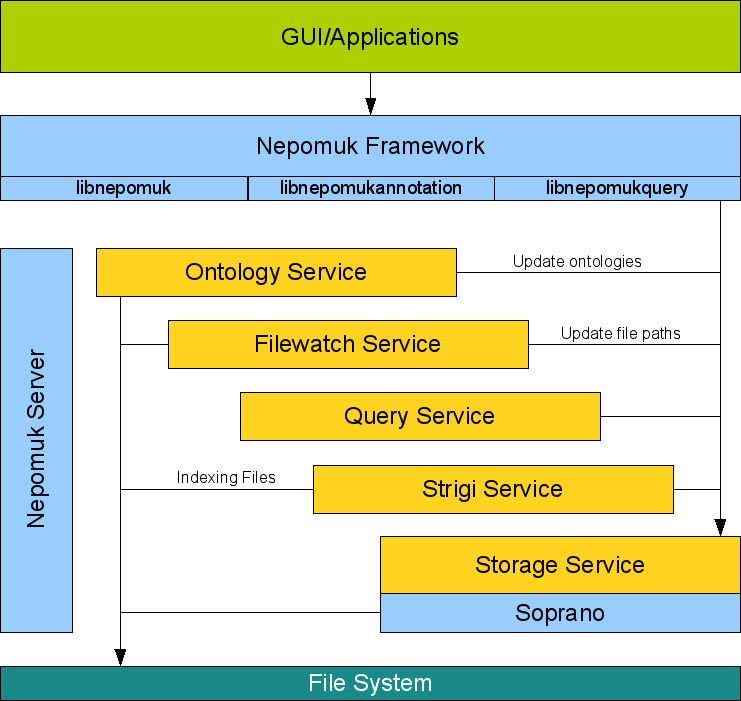Research/Nepomuk: Difference between revisions
mNo edit summary |
m 8 revisions imported |
||
| (4 intermediate revisions by 4 users not shown) | |||
| Line 1: | Line 1: | ||
[[Image:Nepomuk-KDE-Logo.png]] | [[Image:Nepomuk-KDE-Logo.png]] | ||
| Line 8: | Line 10: | ||
online collaboration by individuals or groups. | online collaboration by individuals or groups. | ||
The desktop aspect of the project is where | The desktop aspect of the project is where | ||
[http://nepomuk | [http://nepomuk.kde.org/ Nepomuk-KDE] | ||
comes in: | comes in: | ||
a freely and widely available platform which contains the NEPOMUK results. | a freely and widely available platform which contains the NEPOMUK results. | ||
| Line 31: | Line 33: | ||
=== Demonstration === | === Demonstration === | ||
Nepomuk technologies have been integrated into KDE starting KDE 4.0. 4.2 will feature more integration. | |||
=== More information === | === More information === | ||
More information on the project work and results can be found at: | More information on the project work and results can be found at: | ||
[http://nepomuk. | [http://nepomuk.kde.org/ nepomuk.kde.org] | ||
Latest revision as of 18:49, 18 March 2016
Introduction
NEPOMUK - The Social Semantic Desktop - is funded by the European Community under FP6-027705 IST. The overall project goal is to extend the personal computer into a collaborative environment, focusing on personal data management and the provisioning of information, potentially involving online collaboration by individuals or groups. The desktop aspect of the project is where Nepomuk-KDE comes in: a freely and widely available platform which contains the NEPOMUK results.
Ontologies
Desktop ontologies define whom a file belongs to, what rating a user assigns to it and which people are related to the file or contents thereof. While adding all the semantic metadata is a tedious task, there is a reward once it is present: Searching for specific information becomes a lot more accurate and to the point. Nepomuk-KDE uses Soprano to access ontologies stored in RDF (resource description format).
Strigi
Strigi is a search engine which will be present in the upcoming KDE 4. With the advent of Nepomuk-KDE, Strigi has access to desktop ontologies. Rapid access to information is one of the goals of this integration, which is depicted in the following diagram.
Demonstration
Nepomuk technologies have been integrated into KDE starting KDE 4.0. 4.2 will feature more integration.
More information
More information on the project work and results can be found at: nepomuk.kde.org


